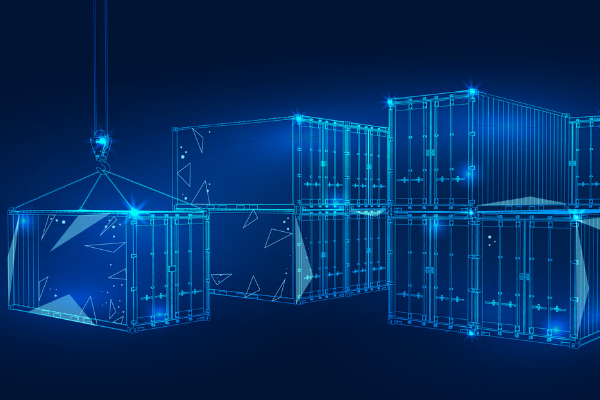19 May Kubernetes-Native Storage for the Enterprise: How ionir Works
Kubernetes adoption is escalating fast, but one barrier remains: data cannot be moved quickly. Unlike apps, transporting data takes hours or days and data gravity threatens the entire Kubernetes value proposition.
Kubernetes-Native Storage eliminates data gravity, allowing application data to move at the speed of applications. Full volumes, regardless of size or amount of data, are transported across clouds or across the world in 40 seconds or less. Read on to learn more about how ionir Kubernetes Native Storage works and find out why it’s so valuable to enterprises throughout all industries.
What is Kubernetes-Native Storage?
ionir Kubernetes Native Storage (K8sNS) is a container-native storage software suite that is fully orchestrated by Kubernetes and installed in minutes. K8sNS pools local physical media capacity and presents virtual volumes to applications. Additionally, it enables instant movement of data to and from any cluster, anywhere, and enables instant access to data at any point in time. This enables enterprises with a single platform that is simple, inexpensive, and quickly moves your data around multiple clouds whether private, public, or hybrid.
How is this possible?
K8sNS sits between physical storage and business applications and virtualizes data from NVMe devices in the servers running Kubernetes. Next, it creates a pool of capacity, and then presents logical storage volumes to the applications. The proprietary metadata structure of Kubernetes Native Storage separates the address from the content and calls blocks by name, not address. This way, it doesn’t matter where the blocks are located — they can all be accessed regardless.
K8sNS powers up enterprises with the following data management capabilities:
- Continuous data protection
- Instant restore to any point in time
- Instant copy to any location
- Global deduplication
- Automated tiering
How Kubernetes-Native Storage Works
Kubernetes is designed to kill and/or restart any container in the data infrastructure at will. When a container is killed, its data is lost. Using a CNS like Kubernetes Native Storage ensures data persists even if the container doesn’t. Essentially, Kubernetes automates container operations, eliminating difficult and time-consuming manual processes that correspond with application development and scaling.
Primarily, there are 7 steps to executing Kubernetes Native Storage:
1. The “Write”
A “write” comes into ionir.
2. Store Time
Ionir stores the time of the write.
3. Tag
The volume and offset provided by the application are stored as a tag.
4. Hash
A hash is computed from the payload — the data content of the write. This hash becomes the unique name of the block.
5. Store Name and Data
The name (hash) and payload (data) are written to storage media.
6. Global Deduplication
If another write is received containing the same payload, a note is made in the metadata, but no additional write is necessary as a block containing that content already exists.
7. Data Preservation
If an application attempts to overwrite the contents of a specific volume-offset location, ionir instead writes a new (name + contents) block with a new timestamp. Old blocks are not overwritten so data is preserved. Simply by manipulating metadata, ionir can instantly produce a copy of the volume containing blocks from any point in time.
To learn more about ionir’s high-performance, software-defined, container-native storage and data management platform, download our free ebook.
Microservices Architecture: The Forces Behind K8sNS
Microservices architecture is the foundation of Kubernetes Native Storage. Microservices allow developers to build new components of applications to meet the changing demands of customers and the market. K8sNS software is built on a modern microservices architecture, enabling rapid, linear scaling and extensibility. This architecture is made up of three microservices, the Pitcher, the Catcher, and the Keeper.
The Pitcher interfaces with applications storing or requesting data. It maintains and updates the most recent view of logical objects.
The Catcher manages metadata. Ultimately, the Catcher is the heart of the system.
The Keeper interfaces with storage media to store and retrieve data. Additionally, it maintains redundancy across the entire managed pool.
Instant Data Agility
Kubernetes-Native Storage enables enterprises to copy data to any location or any point in time in just seconds. Storing data by name rather than location allows data mobility of place. Basically, data can be moved to any cluster instantly.
Moreover, storing the time of writes allows data mobility of time. Data mobility of time can help fix issues similar to the newer write containing malware or a bug that could potentially destroy all the data.
For in-depth examples of ionir K8sNS’ instant copy of data to new locations and any point in time, download our free ebook.
Final Thoughts
With ionir Kubernetes-Native Storage, your enterprise becomes more agile, making you more competitive — enabling your organization to make decisions faster, innovate quicker, and operate more effectively. With K8sNS, your enterprise will benefit from simplified management, automated elasticity and scale, the ability to achieve one second RPO without complicated and expensive snapshot processes, and so much more.
Achieve the vision of Kubernetes at enterprise scale — Download your free copy of our ebook Kubernetes Native Storage for the Enterprise: How ionir Works.






